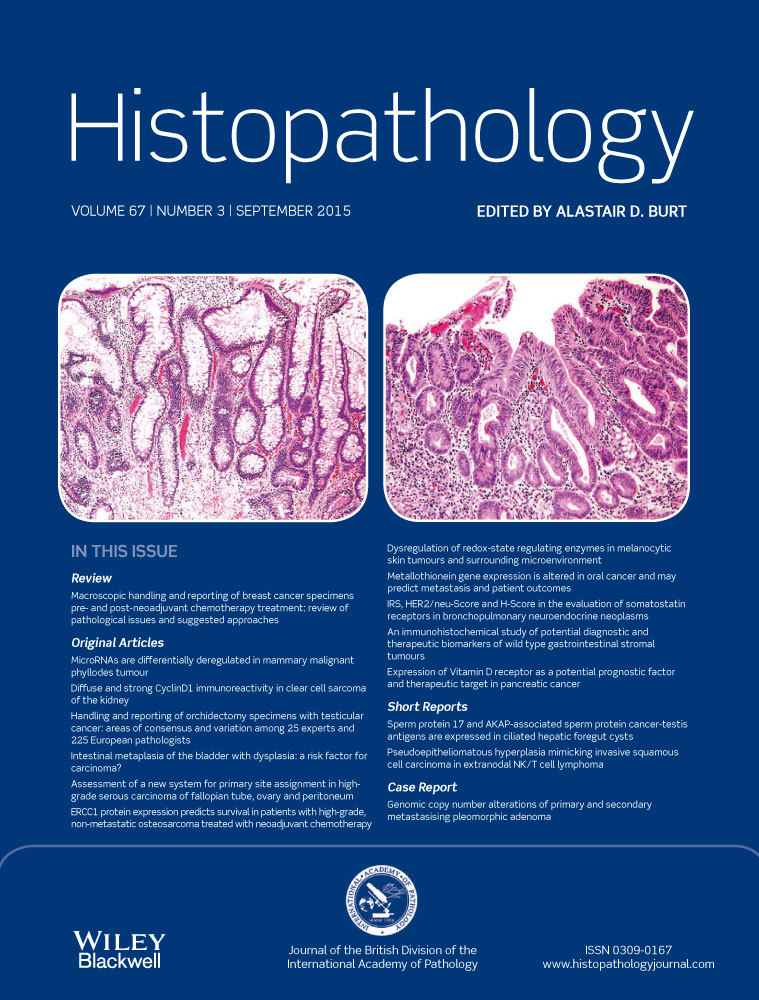Dysregulation of redox-state-regulating enzymes in melanocytic skin tumours and the surrounding microenvironment
Abstract
Aims
To investigate redox-regulating enzymes that may have a special role in melanoma pathogenesis due to continuous exposure to microenvironment-produced and ultraviolet radiation-induced oxidative stress.
Methods and results
We assessed immunohistochemically the expression of antioxidant enzymes peroxiredoxins (Prxs) I–IV, sulfiredoxin (Srx) and redox-regulated proto-oncogene DJ-1 in material consisting of 30 benign naevi, 14 lentigo malignas and 67 malignant melanomas. Evaluation of immunostaining was performed with special attention paid to protein expression in different tumour compartments. In particular, the expression patterns of nuclear Prx I and Prx II and cytoplasmic DJ-1 were decreased significantly in melanomas compared with dysplastic and benign naevi. In multivariate analysis, several prognostic factors were identified: Prx III expression in the cytoplasm of stromal fibroblasts was associated with shortened melanoma-specific survival [hazard ratio (HR) 6.730; 95% confidence interval (CI) 1.579–28.689], while cytoplasmic Prx IV expression in endothelial cells (HR 6.563; 95% CI 1.750–24.620) and Srx expression in the cytoplasm of keratinocytes (HR 6.988; 95% CI 1.559–31.324) were associated with better prognosis independently of ulceration, thickness of melanoma or its diagnostic type.
Conclusions
Redox-regulating enzymes have the potential to serve as novel prognostic factors and targeting them may offer new therapeutic options in malignant melanoma.




